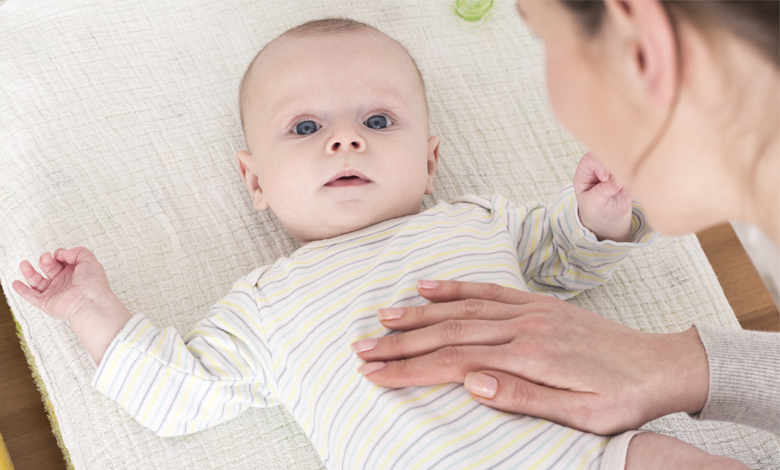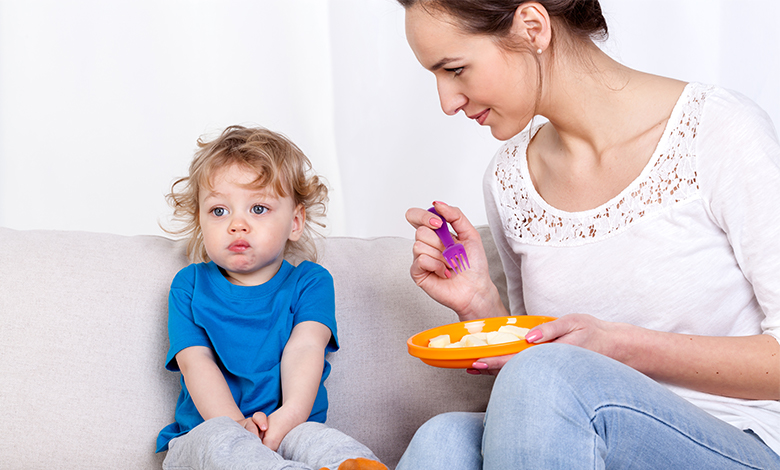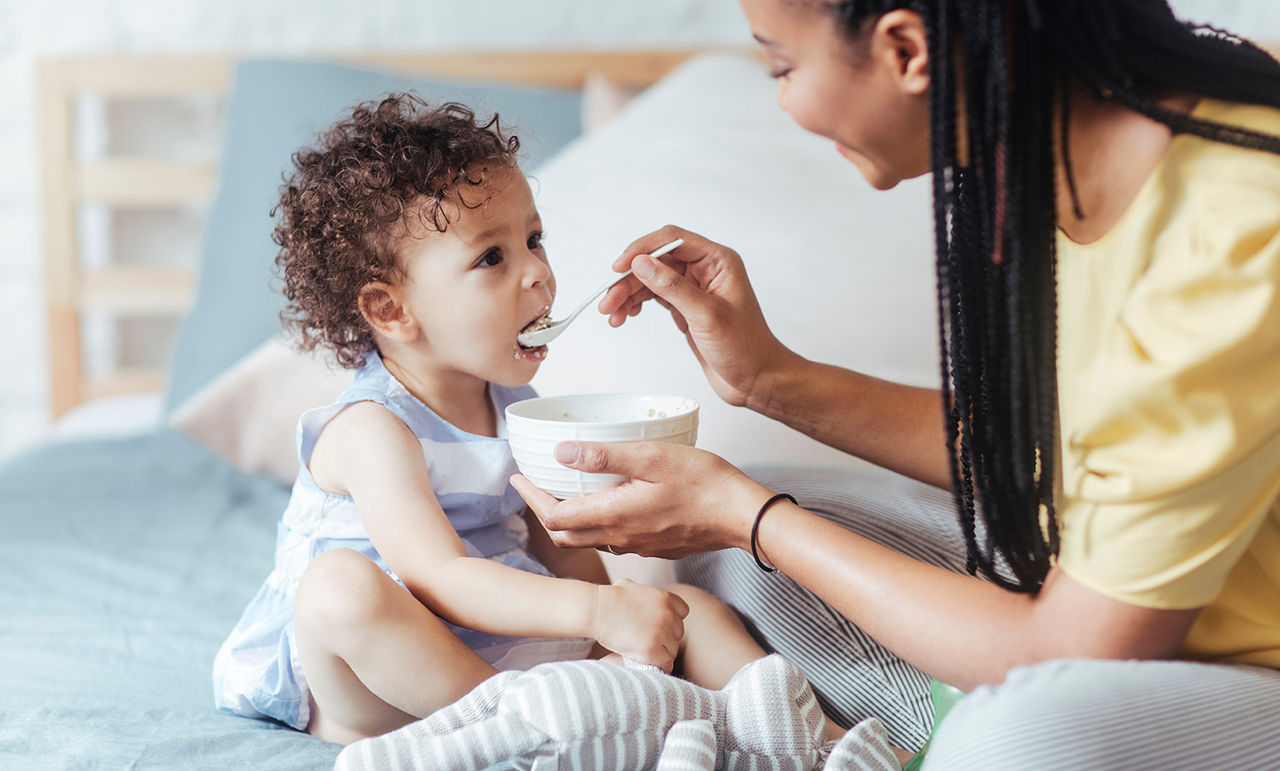- Division of responsibility means parents decide what is served and the child decides what to eat
- It can take up to 10 exposures to a food before a child will try it
- Eating as a family promotes lifelong positive habits
What is ‘division of responsibility’ feeding?

Key points
Division of responsibility’ is a concept pioneered by Ellyn Satter that gives parents control of what, when and where a child eats, while your little one chooses exactly how much they want to consume at each meal and whether they eat the foods you offer.Part of the reason this method is growing in popularity is because it encourages families to eat meals together. It also helps to develop positive habits around food that prompt kids to eat when they’re hungry as well as listen to fullness cues – all behaviours that are beneficial in later life. If your child decides they don’t want to eat everything on their plate, that’s fine. Remember, taste development for children takes time and exploring new meals and different foods is part of the process. It can take being offered the same food up to 10 times before a child will like it, so giving children the autonomy to decide what they’ll eat can be useful (and less stressful) this way.
A day on a plate
When using division of responsibility, you structure your day into regular eating times – breakfast, morning tea, lunch, afternoon tea, dinner and supper. If your little one says they’re hungry, they need to wait until the next meal. If, for example, they don’t eat much at lunch – their natural hunger is going to prompt them to eat more at afternoon tea. This can take a lot of stress out of mealtimes, especially if your child is going through a fussy phase with food. You can rest assured that they’re going to have plenty of opportunities to eat and that they won’t go hungry. Division of responsibility also discourages a child from eating because they’re bored and stops parents from using food as a reward. If you do want to offer your little one a treat, consider something like a book or family bike ride as opposed to food.
Family benefits
Following this model encourages the whole family to eat together at least once a day, and it ensures the house usually only needs to cook one meal that everyone can eat. This has the flow-on effect of allowing more family bonding time. You don’t need to have food available all day to graze on or cook separate meals. Try making meals that are family-friendly – things like spaghetti Bolognese, lasagne or fish and vegetables. If you want to make something that might be challenging for a little one’s palate, like a curry, make the same meal for the whole family and add your spices in at the end. Eating together is one of the biggest things you can do to help your children become more adventurous eaters. It’s important you communicate to them that you’re eating at set times. If they’re asking for food when you’re at the park walking the dog, then it’s not an appropriate time to eat. Try using phrases like, “It’s not long until morning tea, we’ll have cheese and crackers, so can you wait until then, please?” Or, “We’re going to play for another 15 minutes and then we’ll have something to eat.”
Put your mind at ease
You need to trust that your child is listening to their body’s cues when they’re eating (or not). Every child is different and hunger levels can change daily. Your child may devour food one day and then not eat much the next, and that’s OK. Let them eat to satiate their hunger rather than telling them to finish their plate because that approach isn’t going to help them in the long run. It can be useful as a parent to try and switch your mindset from worrying if they’re not eating to being confident that they’re going to have many opportunities to eat throughout the day.
Related pages

Get in touch with our Careline experts
When your little one is unhappy or unwell you want reliable support from a trusted source. Our Careline team of nutritionists, dietitians and midwives specialise in infant and child health, offering free nutrition, feeding and product information.
Every feeding journey is unique
Not every parent can produce breast milk. No matter what choice you make, we will support your unique feeding journey.
We at Nutricia believe in providing the best nutrition for babies, which is why we recognise breast milk is uniquely superior for babies as it provides many benefits. It is important that mums have a healthy diet to support breastfeeding. A decision not to breastfeed, or partial bottle feed, may reduce breast milk supply making it difficult to reverse. The cost and social implications of using feeding methods should be considered. Always seek professional advice about feeding your baby. Ensure formula is used as directed as improper use can affect baby’s health.
REMEMBER: The information on this page is general only. If you have any concerns about your baby’s poo or questions about constipation or any other health concerns, please speak to a healthcare professional, like a Pharmacist, GP or Maternal Child Health Nurse.



